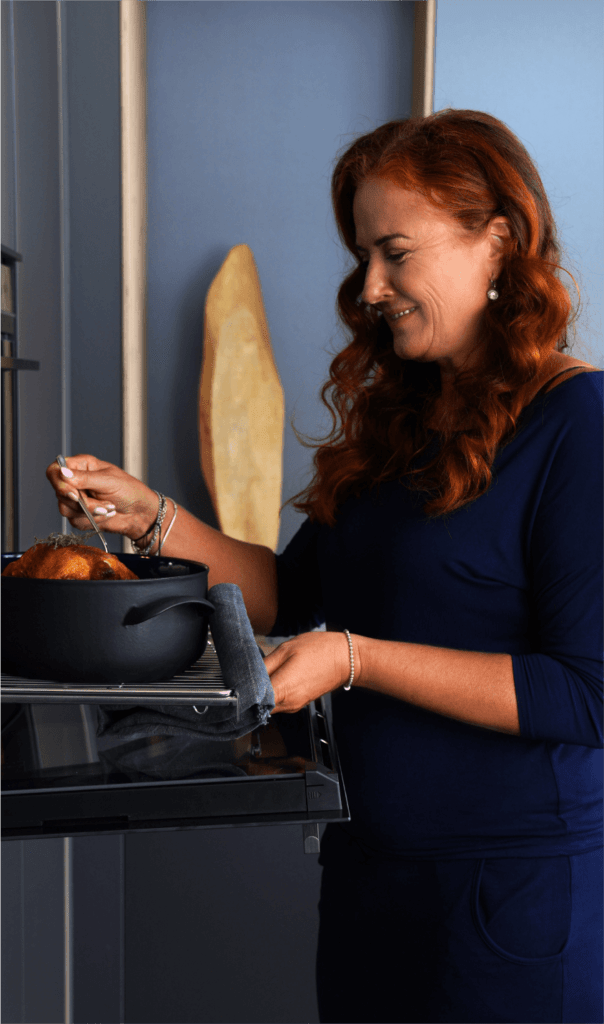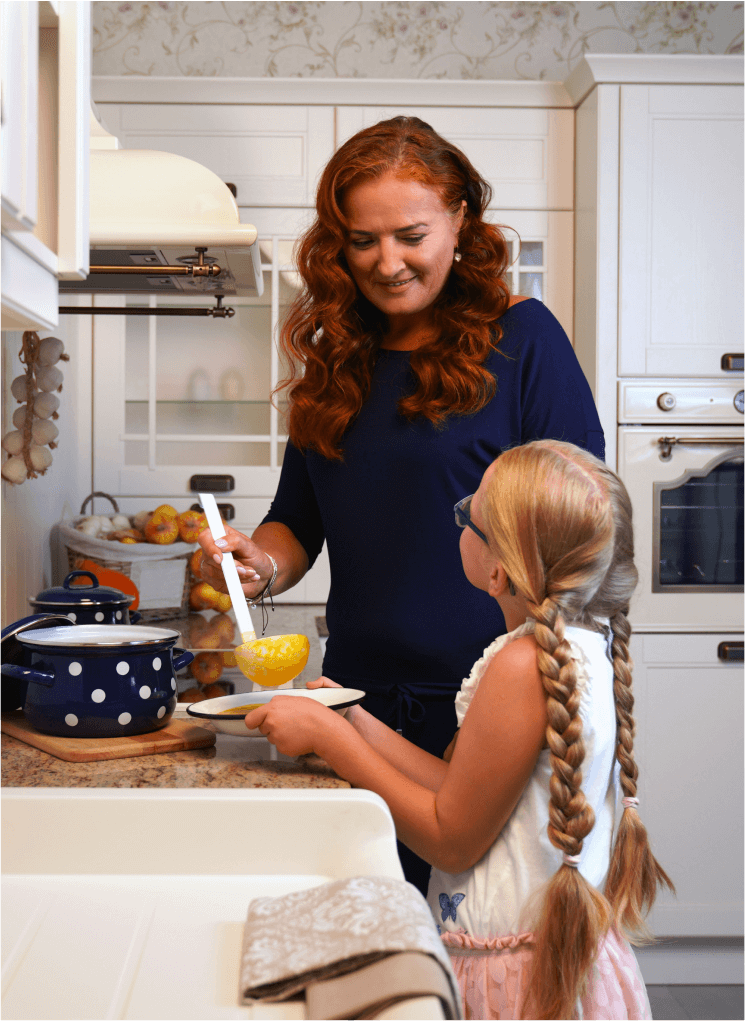ENAMELLED DISHES
ENAMELWARE CARE

Enamelware care
To make sure that the enamelware of your choice lasts you for many years, kindly follow our maintenance guidelines.
FIRST USE
- Remove all plastic foils and stickers from cookware. Adhesive residue can be easily removed with cooking oil.
- To remove any dirt, pour boiling water with a dash of vinegar into the enamelware item and let soak for some time. Rinse with water and dry the product off carefully.
CONTINUOUS USE
- Be careful not to overheat the cookware. The optimum operating temperature for healthy cooking is 220°C. Start the cooking process using medium heat and then increase the temperature if necessary.
- Never heat empty pots and pans. Overheating can warp the base of the cookware or damage your stovetop by melting it.
- Always begin with a lower heat setting on your stovetop and gradually raise it after the cookware’s entire surface has reached the desired temperature. WARNING: NEVER use the stovetop boost function while using this cookware.
- Never place heated-up enamelware into cold water. The temperature shock can cause cracks. Therefore, allow the cookware to cool briefly before cleaning.
VISIT OUR ENAMELWARE E-SHOP
WASHING
Our enamelware is dishwasher safe. The soft side of a cleaning sponge or brush and hand washing with gentle dishwashing liquids are advised for maintaining the enamelware’s long-lasting sheen. To avoid scratching your cookware, do not use overly harsh cleaning tools such as wire brushes, steel wool, cleaning sponges with ceramic particles, and abrasive cleaning products.
PROPER STORAGE
Enamelware should be stored well-dried just like glassware. By doing so, rust won’t develop on the products’ exposed edges. Also, this aids in preventing limescale stains from developing on the products’ surface. Any stains caused by hard water can easily be removed by using a mixture of water and vinegar. If rust forms on the exposed edges of the enamel, it can be easily removed with cleaning detergent. It is advised to occasionally grease the open edges with cooking oil.


